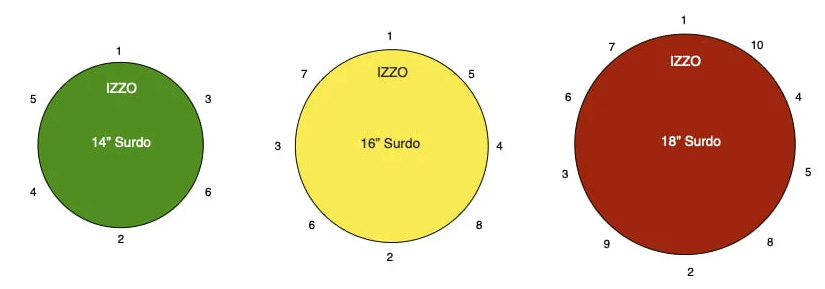Izzo ABS 6" tamborim
- 5 colours available
- 6" diameter synthetic head
- Authentic Brazilian instrument manufactured in famous Sao Paolo factory
- Galvanised hardware fitted with 6 fixed nickel tuners
- Lightweight hard-wearing ABS body produces clear bright tone
- Supplied with tuning key
Product information
Introducing the Izzo ABS 6" tamborim
The shallow tamborim is traditionally hit with a double or triple pronged plastic stick, and plays the distinctive high pitched syncopated rhythms in a samba band. As it's quite small, you’ll probably need more than one to cut through the texture.
This model has a single 6" white synthetic skin that can be tightened by using the supplied key to adjust the hook tuners. Unlike most larger samba drums which are traditionally made of aluminium, these tamborims are made from ABS (acrylonitrile butadiene styrene) a hard rubber also used to make Lego and clarinets among many other things.
We are proud to be the sole importers for Izzo who have been manufacturing top quality instruments in Brazil for more than 60 years.
Izzo are particularly well known for their smaller drums - the pandeiros and tamborims - and even these colourful ABS models are made to an extremely high standard.
Samba instrument care and maintenance
Izzo manufacture quality, authentic Brazilian samba drums and percussion which they have been doing for over 60 years. Their products are hugely popular in schools, colleges and with performing samba ensembles the world over. With the correct care and attention, these instruments should provide musical satisfaction and energetic performances for many years. Here are just a few tips to keep your samba gear in optimal condition.
Before and after playing
We recommend wiping the drums and beaters down with a damp cloth, as well as inspecting the tuning adjusters on each drum to check for any loose nuts. As a part of this process, you can also monitor the tension of the heads. If you find that an adjuster has come loose or a head seems slack, loosen off the entire head to thumb-tight and then re-tune using the included mini spanner. The best way to do this evenly is to tune opposite pairs, and the following diagram will give you the correct order in which to tune various sizes of surdo, caixa, repinique and tamborim:

The schematic above demonstrates the correct order for tightening the nuts onto the hooks of a Surdo. This way the tension is spread most evenly. Start with all the nuts just finger tight and then tighten each nut in turn by half a turn (starting with nut number 1, then 2, then 3 etc.). When you've tightened all the nuts, check the tuning. If a higher pitch is needed, repeat the process (again starting with nut number 1) by a quarter turn at a time and carry on until you're happy with the sound.
When tuning a set of three surdos (14", 16" and 18") start with the 18" and tighten it until the sound is nicely resonant (not "flat"). The tune the 16" until the pitch is higher than the 18". Finally tune the 14", again to a higher pitch than the 16".
If you're tuning more than one surdo of each size, tune all the 18" first, then all the 16" etc. Use the same order for tightening the nuts on the Caxia, Repeniques and Tamborims.


